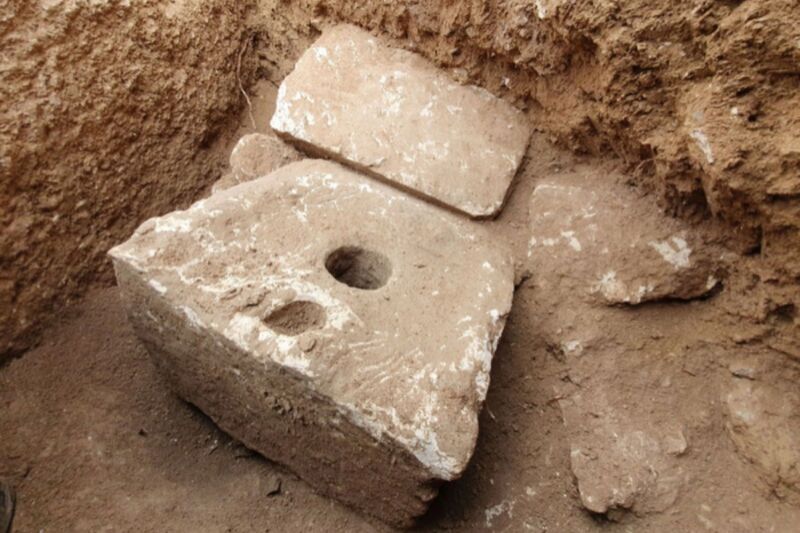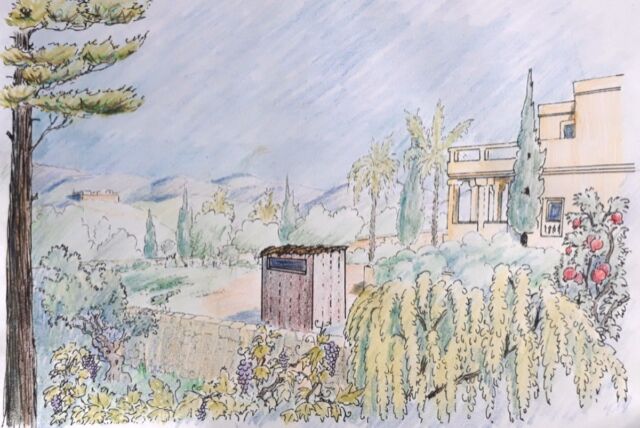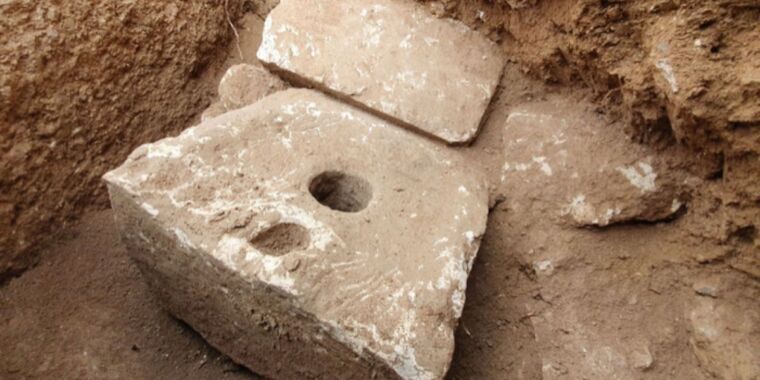
Yoli Schwartz, The Israel Antiquities Authority
The wealthy, privileged elite of Jerusalem in the 7th century BCE were plagued by poor sanitary conditions and resulting parasitic intestinal diseases, according to a recent paper published in the International Journal of Paleopathology. An analysis of soil samples collected from a stone toilet found within the ruins of a swanky villa revealed the presence of parasitic eggs from four different species. The work should help document the history of infectious disease in the region, providing additional insight into the daily lives of the people who once lived there.
“The findings of this study are among the earliest observed in Israel to date,” said author Dafna Langgut of Tel Aviv University and the Steinhardt Museum of Natural History, who is a leading researcher in the emerging field of archeoparasitology. “These are durable eggs, and under the special conditions provided by the cesspit, they survived for nearly 2,700 years. Intestinal worms are parasites that cause symptoms like abdominal pain, nausea, diarrhea, and itching. Some of them are especially dangerous for children and can lead to malnutrition, developmental delays, nervous system damage, and, in extreme cases, even death.”
Yes, it sounds gross, but archaeologists can actually learn a great deal by studying the remains of intestinal parasites in ancient feces. For instance, per Langgut, prior studies have compared fecal parasites found in hunter-gatherer and farming communities, thereby revealing dramatic dietary changes, as well as shifts in settlement patterns and social organization coinciding with the rise of agriculture. The domestication of animals in particular led to more parasitic infections in farming communities, while hunter-gatherer groups were exposed to fewer parasites and transmissible diseases given their nomadic lifestyle. This is even reflected in modern nomadic communities of hunter-gatherers.
There are references to intestinal parasites in many ancient texts from the Israel region, and “the Fertile Crescent most probably predates other regions in the appearance of intestinal parasitic infection,” Langgut wrote. In 2019-2020, the Israel Antiquity Authority began excavating the ruins of a large estate known as Armon Hanatziv, or the Commissioner’s Palace, dating back to the mid-7th century BC—i.e., the First Temple period, likely falling between the reigns of King Hezekiah and King Josiah.

Yaniv Korman
The architectural elements of the limestone structures reflected the “Porto-Aeolian” style, per Langgut, and included lavish window frames and balustrades showing expert workmanship. The spectacular views from the site include the City of David to the north, and the Judean Desert to the south. A preliminary pollen investigation revealed that there was a garden of fruit trees and decorative plants adjacent to the estate.
When the garden was excavated, archaeologists found evidence of a large water reservoir and a cubical limestone object with a hole in the center—likely the remains of a primitive toilet seat. Air pollen from pine at the site suggests that the toilet was housed in a small room with either windows or without a roof for better ventilation, while the pine would help mask the pungent aromas.
There is limited archaeological evidence of toilets in ancient Israel, according to Langgut, with the earliest three examples dating back to the Late Bronze Age—all located in palatial areas, indicating that toilets were a privilege afforded primarily to members of ruling groups. But there have been only two studies examining possible parasitic remains at any of the toilets found thus far, only one of which reported the recovery of the eggs of intestinal parasites. Langgut saw a prime opportunity to add to the scientific literature with the discovery of the toilet at Armon Hanatziv.








